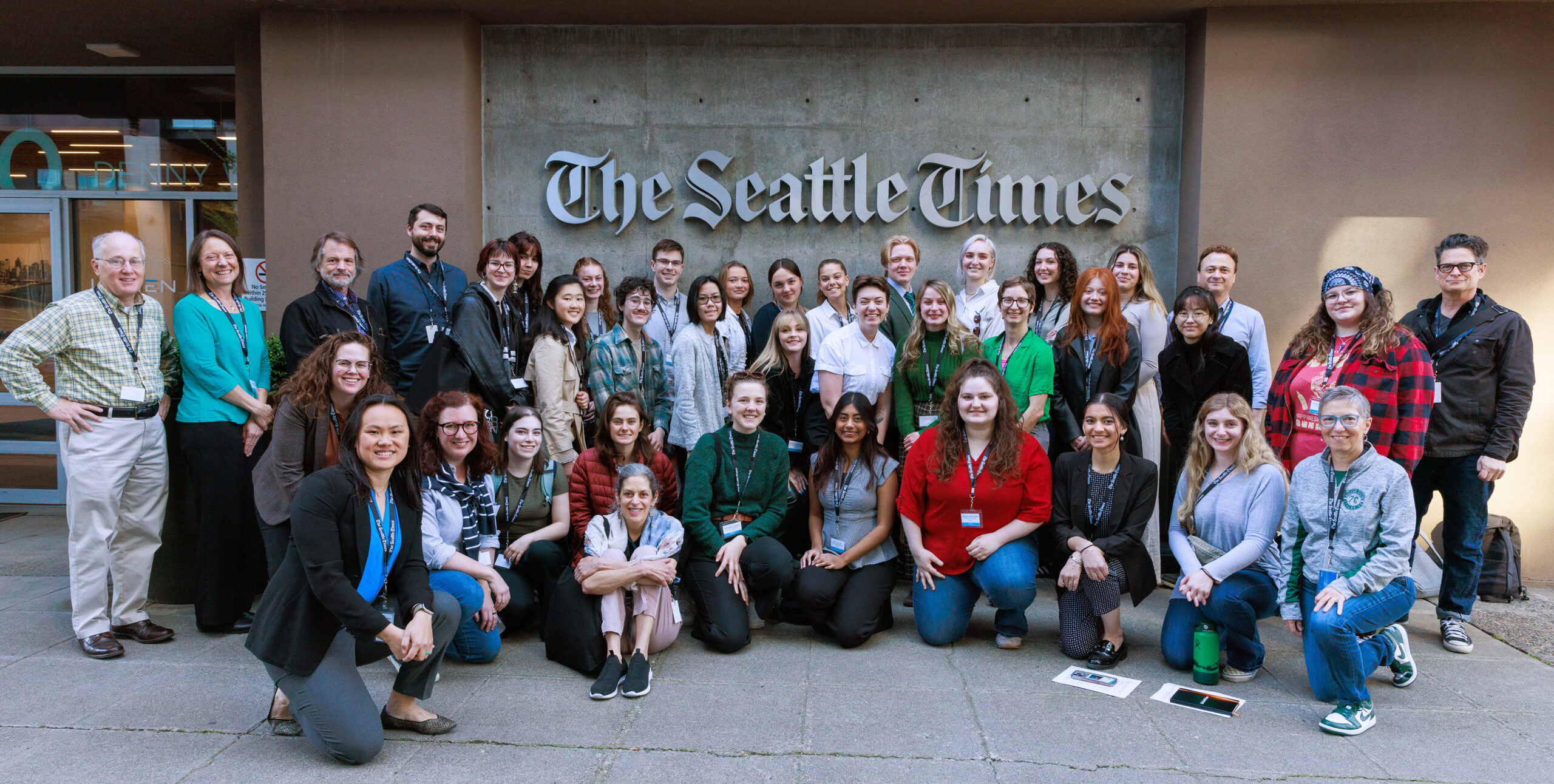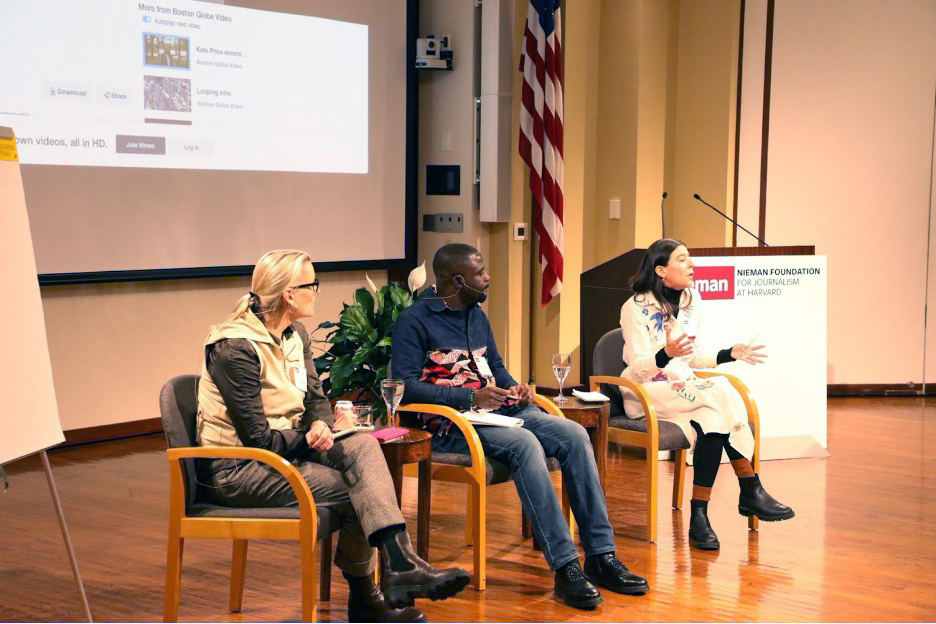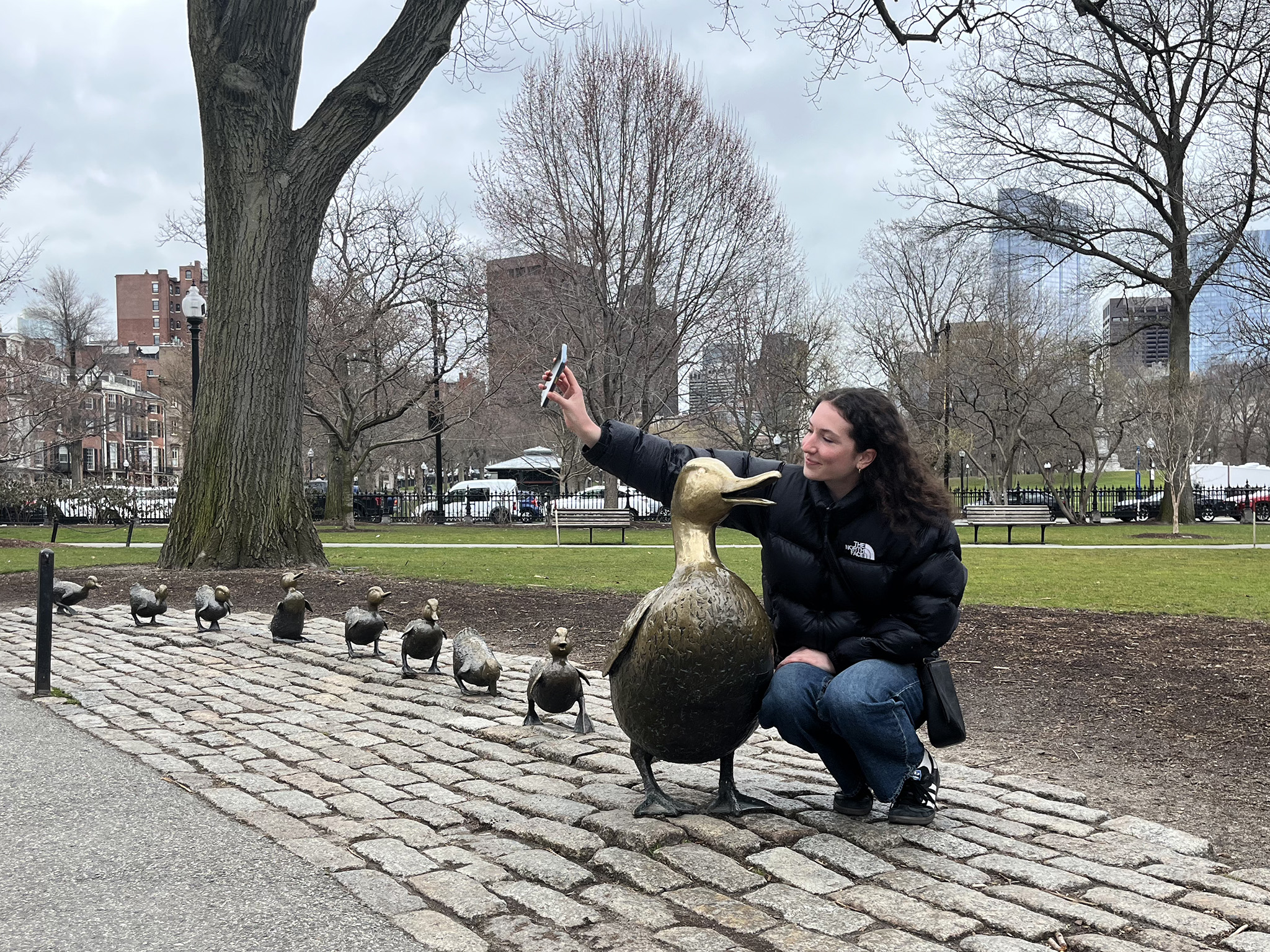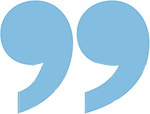Next generation of Western journalists seize opportunities

A reflection on two college journalism events from a second-year news/editorial student
Story by Franny Vollert
Last month I had the privilege of attending two events related to college journalism on opposite sides of the country – the 2024 Georges Conference on College Journalism, held at Harvard University, and the inaugural Best of the Pacific Northwest College Journalism Symposium, held at the Seattle Times. In their respective ways, these opportunities offered me a more comprehensive perspective on journalism as a practice and a career.
Traveling to the East Coast for the first time in my life and being in a room with students and professionals who have accomplished so much in my field was at first a daunting experience, despite having full confidence in my abilities.
The Georges Conference on College Journalism, hosted by the Nieman Foundation on April 6 and 7, emphasized to me how important it is to connect with other students doing similar work, even if that work is happening thousands of miles away. I learned a lot about how other student publications are structured and the leadership styles of their editors. I was struck by how established and professional these student newspapers are, both when it comes to their workflow and how well the students themselves fill leadership roles with such professionalism. While hearing from these students showed me that our publications at Western have a long way to go, it also excited me as a student so early in my career.

Regarding this, I recall sharing an important note with Oren Roberts, the other student attending the conference, and Prof. Betsy O’Donovan during our reflection on the weekend. The schools that the three of us found ourselves among are overwhelmingly well-established and well-funded over generations, creating a solid foundation on which the student publications rest. At Western, we have a rare and important opportunity to create an even richer and more connected campus community. Our student publications can work to take the modern and progressive values of our school that are so important to students and build an institution on that foundation. This task is one that young journalism students have to undertake, and while it may seem daunting, one thing the Georges Conference made clear to me is that journalism is not for the faint of heart. During a panel moderated by Professor O’Donovan on the morning of the conference’s last day, three accomplished journalists at different stages in their careers argued in favor of pursuing journalism as a career path. They described formative experiences in their own respective careers – reporting on the Uvalde shooting in Texas; being on the ground during 9/11; covering Argentina’s changing political climate. These journalists have seen things I can only attempt to imagine. They described journalism as “answering to a calling,” emphasizing that the career is one of public service. It was stressed that, as journalists, we must carry the understanding that both democracy and independent, reliable journalism are fragile things that depend on people working to preserve them.
During the Georges Conference, I was asked questions about my work as a student journalist that had never occurred to me before – how do we as student publications hold our academic institutions accountable through our coverage? How do we engage young journalism students who see the work they do for student publications as a chore, as just another box to check off the list of major requirements? These questions were still bouncing around in my brain long after the conference was over. I wondered how to create a competitive environment at Western’s publications for news/editorial students like myself while continuing to allow those on the visual and public relations tracks to broaden their own writing and reporting skillsets. I hope to address these issues in my remaining time at Western through leadership positions at student publications.

Two weeks later, the Best of the PNW College Journalism Symposium was an equally valuable yet different experience. The two-day event, held on April 18 and 19 at the Seattle Times’ headquarters, gave a group of student journalists from across the Northwest the chance to hone their journalistic skills and make connections within a major newsroom. Each student was provided with a mentor who gave feedback on both a resume and work samples submitted in the weeks prior. I had the privilege of being mentored by Kaleigh Carroll, a multiplatform copy editor at the Times and a Western alum. Carroll served as Managing Editor and Editor-in-Chief at The Planet Magazine while at Western, as well as Managing Editor and Opinions Editor at The Front. Being able to ask someone questions who not only pursued the same journalism track that I am currently on but who also works in my particular area of interest was extremely valuable. The Times staff organized a live reporting and writing opportunity for us all, sending us out into the city to conduct interviews and report a story on a tight deadline. Our work was critiqued by editors, mimicking the true newsroom environment.
One of my favorite things about my experience at the Seattle Times was the transparency from the staff about their work. During a “lunch with the editors” where students heard from both the executive and managing editors at the Times, Executive Editor Michele Flores stressed that journalism is not a career of advocacy. Particularly during tumultuous times in our world, journalists must strive to continue with transparent and accurate reporting that steers clear of bias. My meeting with Kaleigh gave me insight into what a journalism career straight out of college could look like. On the second day of the symposium, myself and a group of other students interested in copy editing met with Carole McCloskey, a news desk editor at the Times who answered questions about the nuances of her day-to-day. The last portion of the symposium allowed us to practice pitching to the editors who regularly receive pitches from freelance writers and ask questions about the freelance process.
Experiences like the Seattle Times symposium give students a window into the realities of the career and how we as young journalists can expand our professional connections while still in school.
One thing that was important to me with both of these incredible opportunities was the recognition of my work and skills that brought me into these spaces in the first place. I decided to pursue the news/editorial major at Western largely due to the professors whose faith in my work pushed me to think bigger about an area I hadn’t considered before.
Student talent (and the recognition of that talent) puts Western’s name on the map, and that opens up so much more than could have previously been possible.

